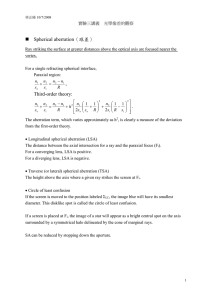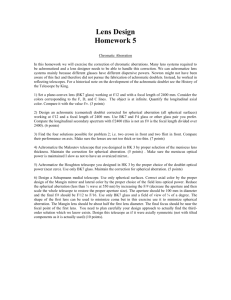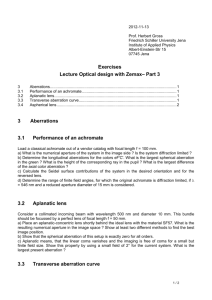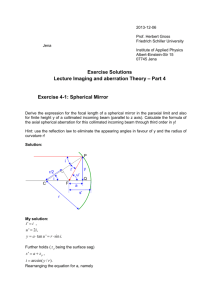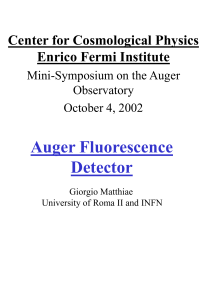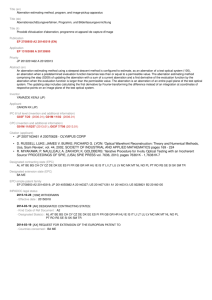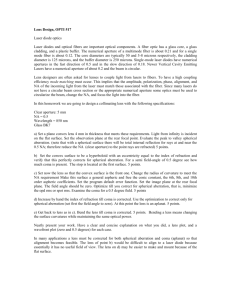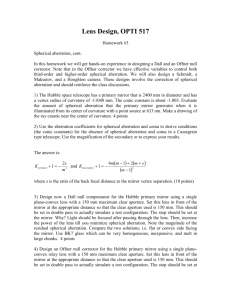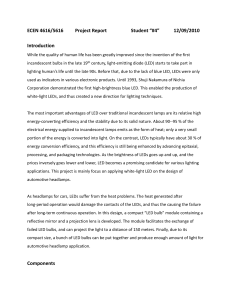Titel - Institute of Applied Physics
advertisement
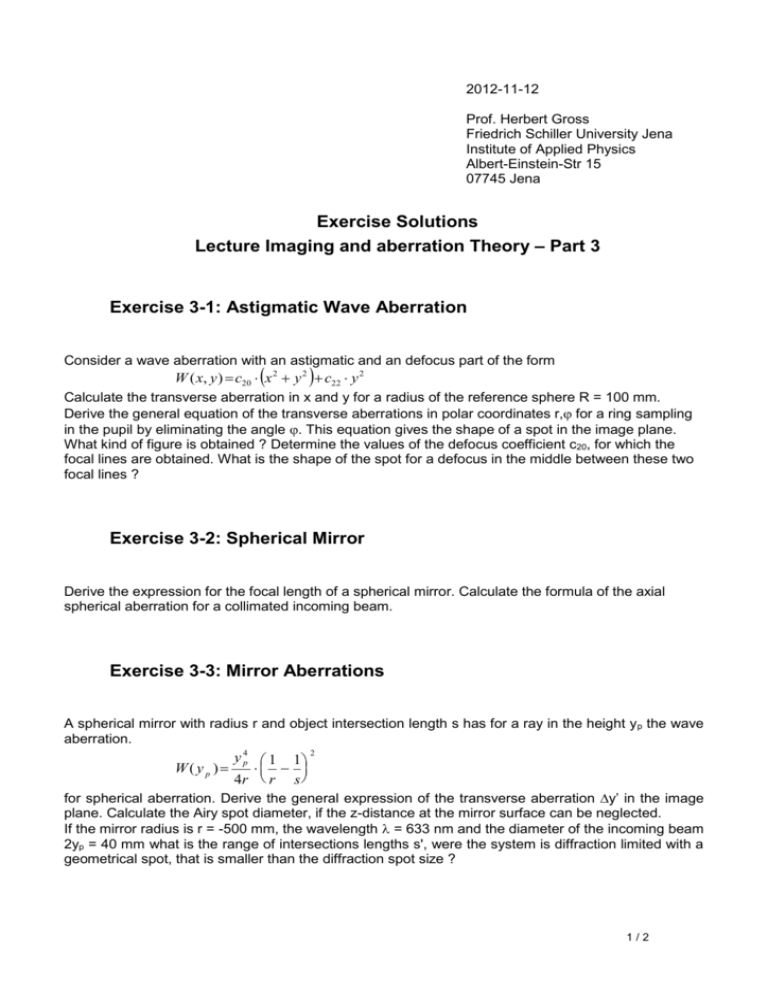
2012-11-12 Prof. Herbert Gross Friedrich Schiller University Jena Institute of Applied Physics Albert-Einstein-Str 15 07745 Jena Exercise Solutions Lecture Imaging and aberration Theory – Part 3 Exercise 3-1: Astigmatic Wave Aberration Consider a wave aberration with an astigmatic and an defocus part of the form W ( x, y ) c20 x 2 y 2 c22 y 2 Calculate the transverse aberration in x and y for a radius of the reference sphere R = 100 mm. Derive the general equation of the transverse aberrations in polar coordinates r, for a ring sampling in the pupil by eliminating the angle . This equation gives the shape of a spot in the image plane. What kind of figure is obtained ? Determine the values of the defocus coefficient c20, for which the focal lines are obtained. What is the shape of the spot for a defocus in the middle between these two focal lines ? Exercise 3-2: Spherical Mirror Derive the expression for the focal length of a spherical mirror. Calculate the formula of the axial spherical aberration for a collimated incoming beam. Exercise 3-3: Mirror Aberrations A spherical mirror with radius r and object intersection length s has for a ray in the height y p the wave aberration. W(yp ) y 4p 1 1 2 4r r s for spherical aberration. Derive the general expression of the transverse aberration y’ in the image plane. Calculate the Airy spot diameter, if the z-distance at the mirror surface can be neglected. If the mirror radius is r = -500 mm, the wavelength = 633 nm and the diameter of the incoming beam 2yp = 40 mm what is the range of intersections lengths s', were the system is diffraction limited with a geometrical spot, that is smaller than the diffraction spot size ? 1/2 2 Exercise 3-4: Spherical Aberration of a single lens A thin plane-convex lens with focal length f' = 100 mm is used to focus a collimated beam with diameter D = 10 mm and wavelength = 1.06 m. Draw a sketch of the lens in the optimal setup and explain, why this orientation is advantageous. Calculate the magnification parameter M and the bending parameter X of the lens. The surface contribution of the primary spherical wave aberration of a single lens can be expressed by the formula 2 3 2 n2 1 n2 n 1 2 1 n n 2 As M M X 32n( n 1) f 3 n 1 n 1 n2 n2 Calculate this coefficient for the refractive indices n = 1.4 and n = 2.0. Which choice of refractive index is more advantageous ? Calculate the transverse aberration y’ in the image plane in the one-dimensional case with the pupil coordinate yp by using this formula in the form WSPH y p As y 4p for both indices. Is the system diffraction limited ? Compare the geometrical spot size and the diffraction Airy diameter. Exercise 3-5: Field flattening lens Calculate a thick meniscus shaped lens with refractive index n = 1.5 with vanishing Petzval curvature contribution, a focal length of f = 100 mm and a front radius of r1 = +10 mm. The back radius and the thickness is to be determined.
